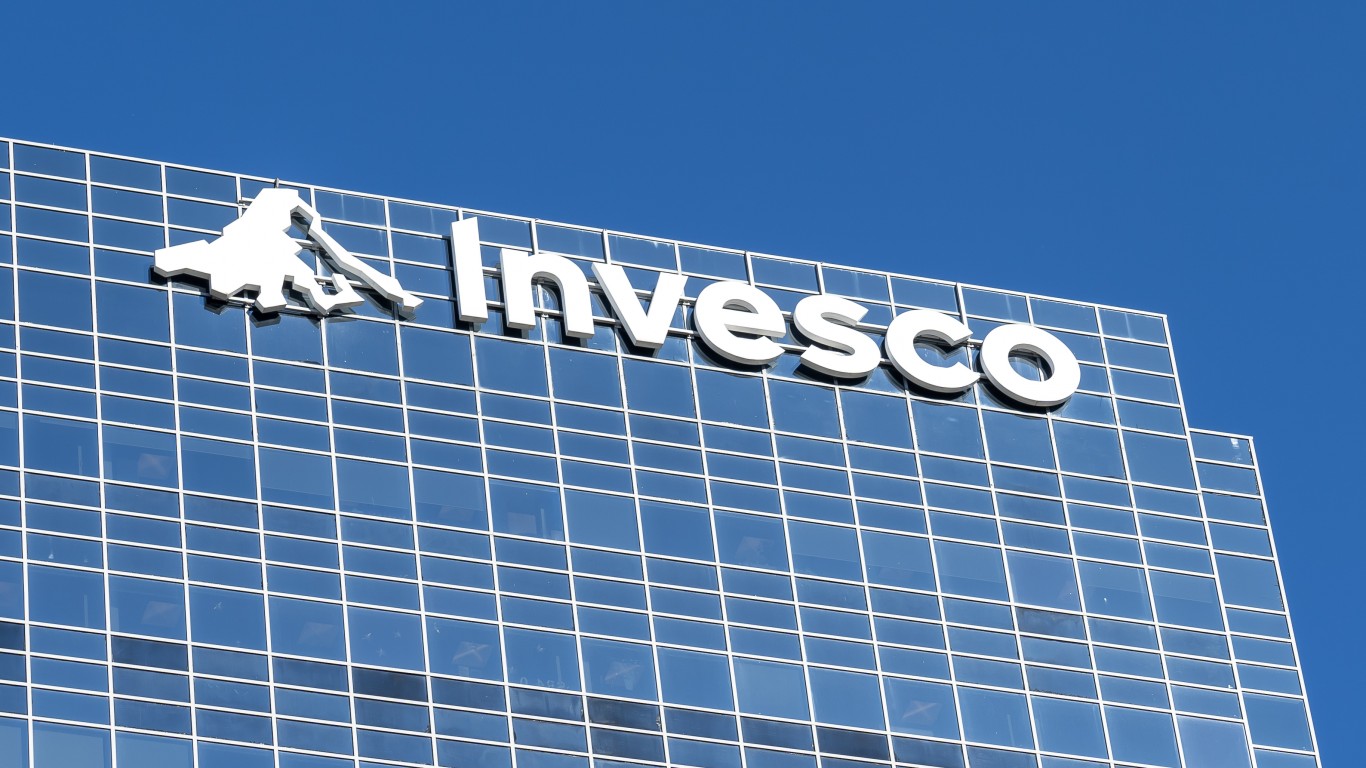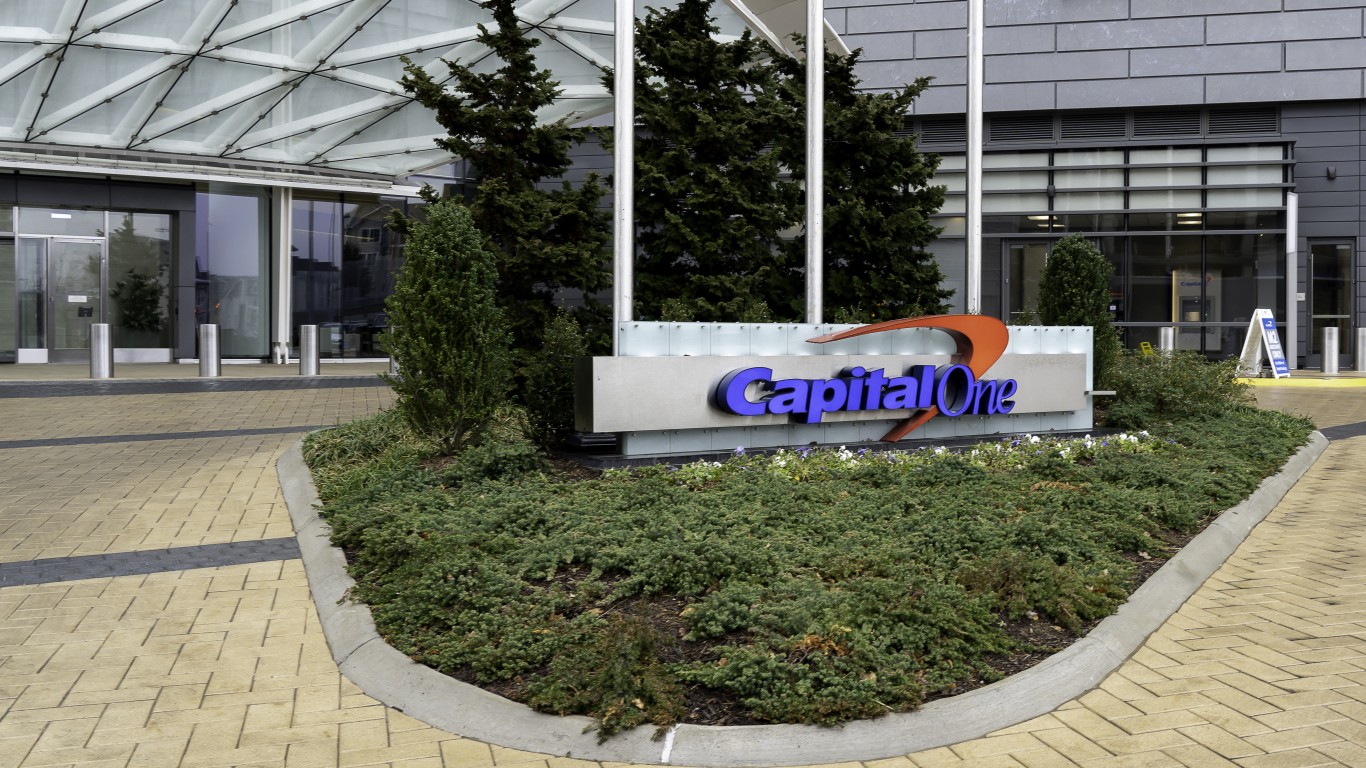The Dow Jones Industrial Average (DJIA) has recently hit new highs, and the reading of 17,000 is now within striking distance. Another milestone is also not that far out of range — DJIA 20,000! If you consider that DJIA 20,000 only requires a price gain of 17.6% in the next two or three years, then this seems even more reasonable under a continued bull market scenario.
Despite DJIA 20,000 being a reasonable expectation under an improving economy and stable to rising equity market, 24/7 Wall St. wanted to see what all it would take for the DJIA to rise to 20,000. That means key stock by key stock.
First off, by our take only 10 of the 30 Dow stocks need to perform well to take the DJIA to 20,000. The DJIA is weighted in an old-fashion price-weighted ranking. This means that a $200 stock price in the DJIA is worth four times that of a $50 stock, regardless of the company’s market cap. Other indexes use adjusted calculations of the market cap these days.
So, back to the 10 stocks that will run the DJIA up to 20,000 if the bull market continues. IndexArb.com projected on Monday that these 10 stocks in the DJIA account for 53.31% of the entire Dow. The top five account for 31.77% of the DJIA. In short, if the highest priced Dow stocks rally, then the rest of the stocks only have to rise marginally for DJIA 20,000 to be close to reality.
The projection to get to DJIA 20,000 of course implies that the bull market continues. By our take, the bull market seems as though it is likely to be supported by a stable market or a market that keeps gradually rising through 2016. At least that is if you assume the bullish price targets and that gross domestic product (GDP) growth resumes in 2014 and picks up into 2015 and 2016.
ALSO READ: 11 Analyst Stocks Under $10 With Huge Implied Upside
We have also provided a bullish case using the highest analyst price targets from Thomson Reuters, then taking these up above that to reflect a two-year to three-year time frame. Also listed is a synopsis of what will drive each stock.
Visa Inc. (NYSE: V) is the largest weighting in the index at 7.94%, making it currently the most important Dow stock. If Visa splits like MasterCard did, then the weightings below will likely pick up. Trading at close to $209, its consensus price target is almost $250, but the highest analyst price target is all the way up at $289. That means the consensus rally should be just under 20%. The rally to the street high call of $289 would be a gain of more than 38%.
For Visa’s case to work out, the global growth of the use of credit, debit and prepaid only needs to continue. Perhaps the merchant service swipe fee issue needs to be set in stone. There seems to be plenty of room for Visa, MasterCard and American Express globally. Visa likely will need to increase its dividend to a more respectable level as well, and earnings growth has to continue, since this already trades at 20 times expected 2015 earnings.
International Business Machines Corp. (NYSE: IBM) is now ranked number two with a 6.88% weighting. It ranked as the top dog of DJIA weightings for years prior to Visa being added to the Dow in 2013. IBM’s share price of $182 has not done much at all of late. The consensus price target is almost $192, but the highest price target is now $225. The base case rally is only about 5.5%, but the best case is a 24% rally. Again, the average DJIA stock would only have to rise less than 18% for the DJIA to hit 20,000.
For IBM to get back on track, perhaps the company reaches that $20 in earnings per share goal in 2015, and maybe then some. After that is hit, the company can refocus on growth opportunities. For the most bullish scenario to unfold, we would expect a resurgence in IT spending for major projects. Watson will have had to make a more meaningful contribution, as well as storage, cloud and other service initiatives. On the valuation front, IBM trades at less than 9.5 times expected 2015 earnings expectations. Imagine if investors were willing to pay 12 or 13 times earnings again for Big Blue.
ALSO READ: The Highest-Yielding Dividends That Are Safe to Hold
Goldman Sachs Group Inc. (NYSE: GS) is larger than all other “banks” in the DJIA, even though it has no formal banking operations. It is the third largest weighting of the DJIA at 6.44%. With shares at $170, its consensus price target of almost $175 implies upside of only 3%. The highest analyst price target of $205 would imply upside of 20.5% if achieved.
The most bullish case for Goldman Sachs is one in which high-frequency trading is not killed, and one where the firm remains a trading powerhouse. The global underwriting markets will have had to remain robust. And perhaps the interest rates do not devalue its bond holdings too badly. The firm also will have to maintain grasp of its employee compensation. Another driving force will be if shares can depeg from book values in banks and brokers. The good news here is that Goldman Sachs trades at only 10 times expected 2015 earnings, and it has a massive room to improve its dividend payout.
3M Co. (NYSE: MMM) is not the largest conglomerate at all, with its $94 billion market cap, but its $144 share price makes it worth almost five times as much as GE despite a $267 billion market cap. Its rank is fourth in overall weighting in the DJIA, with a 5.5% weighting (versus a 1.02% weighting for GE). 3M has rallied handily, and its $144 share price compares to a mere consensus target price of $146.50. The street high on 3M is $160. That is only about 2% of a gain to the base case, but the street-high target implies gains of 11%.
The most bullish case for 3M likely involves the company using its equity as a currency to make an accretive acquisition, perhaps even a tax-friendly deal as has become popular of late. The company also will have to keep exceeding earnings estimates, with a 17.5-times forward 2015 earnings valuation. Investors will have to remain confident that valuations are not getting stretched in conglomerates and industrials.
ALSO READ: Companies With the Best (and Worst) Reputations
Chevron Corp. (NYSE: CVX) ranks fifth among the DJIA weightings, with a 5.01% weight. This is a full 1% higher weight than Exxon Mobil, yet Chevron’s market cap of $252 billion is still barely half that of Exxon Mobil’s market cap of $447 billion. Chevron’s $132.50 share price would generate gains of basically zilch to the $132 consensus. Still, the $145 street high target implies gains of 9.4%.
Chevron’s upside case hinges on higher oil prices remaining the norm rather than the upside. This implies $100 to $110 per barrel. The company also will need to have a continued global opportunity, with fracking and offshore opportunities remaining available without much pressure. The good news here is that Chevron is trading at less than 12 times expected 2015 earnings, so imagine what happens if you get “multiple expansion” where investors are willing to pay up more for the same stock — even a higher multiple like in Exxon Mobil would do wonders here. The dividend hikes also will have had to remain a key policy.
Boeing Co. (NYSE: BA) is the sixth largest Dow stock by weighting, with a 5.01% weight. With shares at $131, the consensus price target is now almost $154. The street-high target is $175. This implies a generally accepted upside of 7% and a top-end current expectation of a gain of 33%.
The upside case for Boeing is one where planes remain strong, and one where perhaps military spending becomes more comfortable, even if it is not robust. Another driver will be the private sector’s efforts to get into space, perhaps with a little more future government ambitions in space again. Boeing also trades at just over 15 times expected 2015 earnings, so the company is going to have to keep surprising on earnings and keep raising its dividend.
United Technologies Corp. (NYSE: UTX) is the seventh highest weighting, at 4.47% of the DJIA. A share price of $117 compares to a consensus price target of $129 and a street high of $138. The consensus target would imply 10.2% upside, but the street-high target implies upside of 18%.
The bullish case for United Tech is one in which the company keeps finding selective opportunities to drive earnings higher, even if that is via accretive acquisitions or tax-friendly deal making. UTC trades at almost 15.5 times expected 2015 earnings, so investors are perhaps going to need to be willing to pay up more for solid industrial earnings. Another improvement that will likely need to be seen is a higher payout than its 2% dividend yield.
Caterpillar Inc. (NYSE: CAT) is ranked as the eighth largest relative DJIA stock, with a weighting of 4.14% for the entire index. With shares now up close to $109, the consensus price target is about $112 and the street high target is $125.00. This implies an upside of only 2.75% to the consensus and almost 15% to the highest analyst price target.
Caterpillar has already managed to surprise to the upside. At this time it surprised almost everyone as the top DJIA stock of 2014, and that is with its growth markets still not in full recovery. The bullish case for Caterpillar is one where South America, China, India and other growth markets come back to near capacity again. The company also will need to surprise with earnings and live up to an ambitious stock buyback effort, because the industrial equipment giant is already at 15 times expected 2015 earnings.
ALSO READ: Analyst Highlights Seven Apple iPhone 6 Suppliers to Buy
Johnson & Johnson (NYSE: JNJ) has continued to grow its price slowly but surely, and the $104.50 share price gives it a 3.99% weighting, making it the ninth highest weighting of the DJIA. Its consensus price target of $105 is effectively no gain expected, but the street-high target of $117 would generate upside of right at 12%.
The bullish case for J&J is one in which product lawsuits and product quality control seem to dribble off with the passing of time. Earnings surprises will be a must, and the company may need to consider some of the current trends of tax-friendly accretive acquisitions where possible. After all, J&J trades at a high 16.5 times expected 2015 earnings. That means J&J must not miss many steps along the next three years, and that 2.7% dividend yield will need to keep ticking higher as well.
Exxon Mobil Corp. (NYSE: XOM) is the tenth highest index weighing in the Dow. It seems odd that its weighting is 3.93% versus 5.01% for Chevron when you consider that Exxon Mobil’s market cap is over two-thirds again that of Chevron. Still, at $104, it has a slightly negative 2% implied downside to the $101.20 consensus target. But the $115 street-high target price from analysts would generate upside of 10.5%.
Exxon faces many of the same challenges and opportunities as the smaller Chevron. Its bullish scenario will need oil to remain high, above $100, and to be one where the company is back to making money from its huge natural acquisition of XTO in recent years. The company obviously will have to maintain its proven reserves, and the international ability for oil companies to operate needs to remain favorable. Exxon likely will need to keep up on its dividend growth game, and it trades at 13.5 times expected 2015 earnings. Imagine if investors are willing to pay closer to a market P/E multiple here again.
So, these are just the largest components. If you use the best analyst targets out there, the average would-be gain on average among these 10 stocks would be 18.5%, and that of course does not include dividend payments.
The DJIA would need to rise by roughly 17.6% to achieve 20,000, and Wall Street’s best assumptions are calling for an 18.5% average upside in the most dominant DJIA stocks. While the focus has just been on the largest DJIA components by weighting, the unwritten rule is that a rising tide will lift most ships.
Getting the Dow to 20,000 will not be a simple feat. That being said, if Europe and Asia get back to more normalcy and if the bull market remains, then asking for less than 20% total stock market appreciation over the next two or three years does not become an unreasonable expectation.
ALSO READ: America’s Worst Companies to Work For
100 Million Americans Are Missing This Crucial Retirement Tool
The thought of burdening your family with a financial disaster is most Americans’ nightmare. However, recent studies show that over 100 million Americans still don’t have proper life insurance in the event they pass away.
Life insurance can bring peace of mind – ensuring your loved ones are safeguarded against unforeseen expenses and debts. With premiums often lower than expected and a variety of plans tailored to different life stages and health conditions, securing a policy is more accessible than ever.
A quick, no-obligation quote can provide valuable insight into what’s available and what might best suit your family’s needs. Life insurance is a simple step you can take today to help secure peace of mind for your loved ones tomorrow.
Click here to learn how to get a quote in just a few minutes.
Thank you for reading! Have some feedback for us?
Contact the 24/7 Wall St. editorial team.





